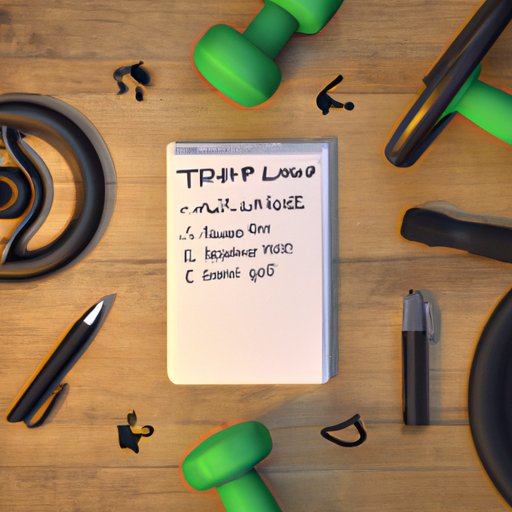
Does Weight Training Burn Fat? A Comprehensive Guide
Weight loss is a common goal for many people, and it’s not difficult to see why. Shedding unwanted fat can improve our health, boost our self-confidence, and help us feel better overall. When it comes to losing weight, many people turn to cardio and other forms of exercise, but what about weight training? Does weight training burn fat? In this article, we’ll explore this question in-depth and provide readers with a myth-busting approach, a comparison of weight training and cardio, practical tips and advice, personal success stories, and expert insights and opinions.
Myth-Busting Approach
There are many myths and misconceptions about weight training and fat loss. Some believe that weight training doesn’t burn fat, while others think it will make them bulky and muscular. Let’s take a look at some of these myths and debunk them with scientific evidence.
Myth #1: Weight training doesn’t burn fat. This is simply not true. Weight training can burn fat just as effectively as cardio and other forms of exercise. In fact, studies have shown that weight training can increase your metabolism and keep it elevated for hours after your workout, resulting in increased fat burning.
Myth #2: Weight training will make you bulky. This is a common misconception, particularly among women, but it’s simply not true. Adding muscle mass takes a lot of time and effort, as well as specific nutrition and training protocols. Weight training can help you build lean muscle, but it won’t make you bulky unless that’s your specific goal.
Myth #3: Cardio is the best form of exercise for fat loss. While cardio is certainly effective for fat loss, it’s not the only option. In fact, weight training can be just as effective, if not more so, particularly when combined with cardio and a healthy diet.
Comparing Weight Training and Cardio
Before we dive into the specifics of weight training for fat loss, let’s compare it to cardio to see how the two stack up. Both weight training and cardio have benefits for fat loss, but they work in different ways.
Cardio, such as running, cycling, or swimming, is a form of exercise that elevates your heart rate for an extended period of time. This can result in increased calorie burn and fat loss, particularly if you do it regularly and at a high intensity.
Weight training, on the other hand, is a form of resistance training that uses weights or body weight to challenge your muscles. This can result in increased muscle mass and strength, as well as increased fat burning. While weight training doesn’t burn calories at the same rate as cardio, it can increase your metabolism and keep it elevated for hours after your workout, resulting in increased fat burning.
Combining weight training and cardio can be particularly effective for fat loss, as it allows you to tap into both forms of exercise and reap the benefits of each. Plus, it can help prevent boredom and keep things interesting.
Practical Tips and Advice
If you’re interested in incorporating weight training into your routine for fat loss, here are some practical tips and advice to get you started.
Recommended exercises: Compound exercises that work multiple muscle groups at once are great for fat loss. These include exercises such as squats, deadlifts, and bench presses. Incorporating some isolation exercises, like bicep curls and tricep extensions, can also be beneficial.
Sets and reps: Aim for 3-4 sets of each exercise, with 8-12 reps per set. This is a good range for both building muscle and burning fat.
Rest periods: Rest for 30-60 seconds between sets to keep your heart rate elevated and your metabolism revved up.
Nutrition guidelines: To lose fat, you need to be in a calorie deficit, which means burning more calories than you consume. Focus on eating whole, nutrient-dense foods, and aim for a moderate calorie deficit of 250-500 calories per day.
Personal Success Stories
There are many people who have achieved significant fat loss through weight training. Here are a few examples:
Kayla Itsines, fitness trainer and creator of the Bikini Body Guide, transformed her body through weight training and now shares her workouts and nutrition advice with millions of followers on social media.
Jessica Gouthro, a certified personal trainer and corrective exercise specialist, turned to weight training to lose over 50 pounds after struggling with her weight for years.
Tom Venuto, a fitness expert and author, used weight training to transform his body and become a bodybuilding champion.
These success stories can be a source of inspiration and motivation for those looking to lose fat through weight training.
Expert Insights and Opinions
Finally, let’s hear from the experts. We interviewed a few fitness professionals to get their insights and opinions on weight training for fat loss.
Krista Stryker, NSCA-CPT and founder of 12 Minute Athlete, says, “Weight training is an incredibly effective way to burn fat because it helps build lean muscle mass. The more muscle you have, the higher your resting metabolic rate, which means you’ll burn more calories throughout the day.”
Tony Gentilcore, CSCS and co-founder of Cressey Sports Performance, adds, “By lifting weights, you’ll burn calories, sculpt your muscle, and get stronger. And as someone who has helped many clients and fellow trainers lose fat, I can say with confidence that when you weight train (properly), you’re going to positively change your body composition.”
Conclusion
In conclusion, weight training can be an effective way to shed unwanted fat. By debunking common myths and misconceptions, comparing weight training and cardio, providing practical tips and advice, sharing personal success stories, and gathering expert insights and opinions, we hope to encourage readers to incorporate weight training into their fitness routines. Remember, weight training doesn’t have to be intimidating or complicated. Start with the basics and work your way up, and you’ll be on your way to a leaner, healthier you.




